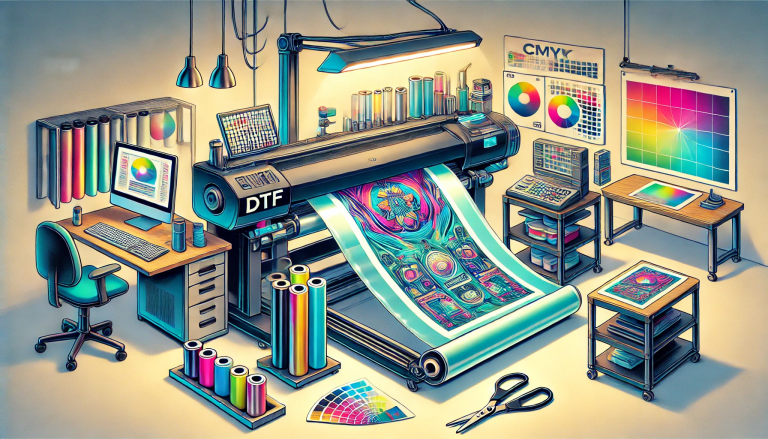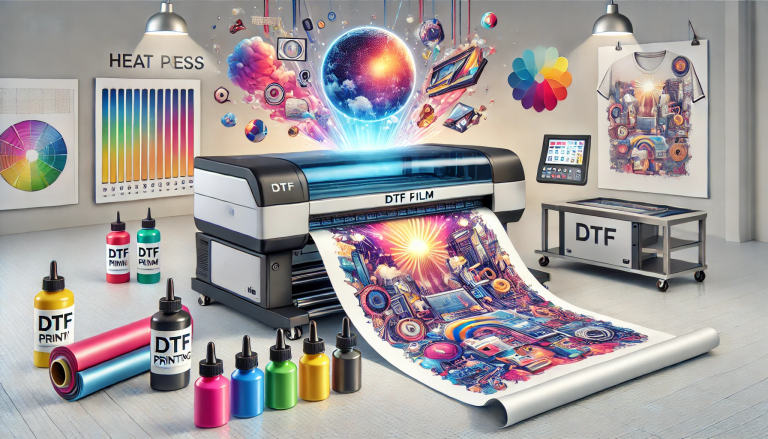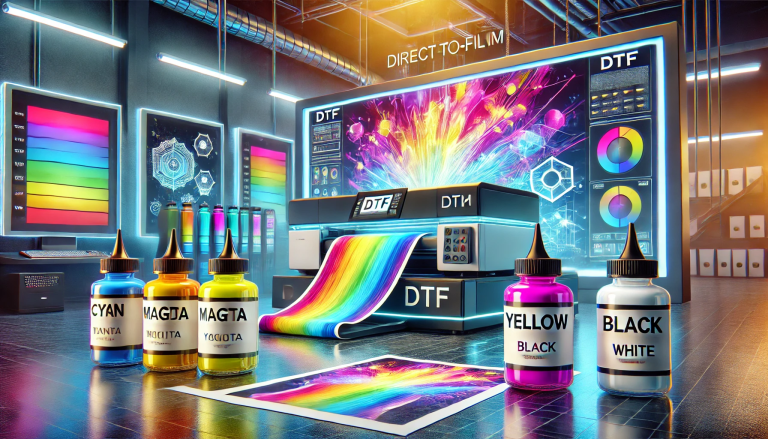In the evolving landscape of textile printing, the emergence of Direct to Film (DTF) technology represents a significant leap forward. This innovative approach, especially when integrated with the capabilities of the Epson F2100 printer, is redefining the standards of efficiency, quality, and flexibility in the industry. The synergy between DTF film and the Epson F2100 printer is not just an enhancement of the printing process; it is a transformative shift that promises to revolutionize how businesses approach textile printing.
A New Horizon in Textile Printing
The Epson F2100 has already established itself as a benchmark for direct-to-garment (DTG) printing, known for its exceptional print quality, reliability, and user-friendly operation. The introduction of DTF technology into this ecosystem expands the printer’s versatility by enabling it to print on a wider variety of textiles and materials beyond traditional cotton fabrics. DTF printing involves creating designs on special films which are then transferred onto fabric using heat and pressure. This method circumvents some of the limitations associated with DTG printing, such as the need for pre-treatment processes and restrictions on the types of fabrics that can be printed.
Advantages of DTF Film Technology
Enhanced Material Compatibility
One of the most compelling advantages of DTF film technology is its compatibility with a vast array of materials. Unlike DTG printing, which excels on cotton-based textiles, DTF allows for vibrant and durable prints on polyester, silk, leather, and even hard surfaces. This opens up new avenues for businesses to explore diverse product offerings, from apparel and accessories to home decor and beyond.
Streamlined Production Process
The integration of DTF technology with the Epson F2100 significantly streamlines the textile printing process. The elimination of pre-treatment requirements for certain fabrics reduces preparation time and cost. Moreover, the DTF process simplifies workflow by consolidating the printing and transfer stages, enhancing operational efficiency and enabling faster turnaround times for orders.
Superior Print Quality and Durability
DTF films, when used with the Epson F2100, produce prints of remarkable quality and durability. The precision of the Epson F2100’s printhead, combined with the high-quality DTF inks, results in vibrant, high-resolution images that are resistant to washing and wear. This durability is paramount for businesses aiming to deliver premium-quality products that stand the test of time.
Economic and Environmental Impact
The adoption of DTF technology also has significant economic and environmental implications. Economically, it allows for lower production costs and higher profit margins. The efficiency of the process reduces waste and energy consumption, contributing to a more sustainable operation. Environmentally, DTF printing offers a greener alternative by minimizing the use of water and chemicals compared to traditional textile printing methods.
Challenges and Considerations
While the benefits of DTF film technology are substantial, there are challenges to consider. The initial investment in equipment and training can be significant. However, the potential return on investment (ROI) through increased efficiency, product quality, and market opportunities often justifies the upfront costs. Additionally, businesses must navigate the learning curve associated with mastering DTF printing techniques to fully leverage the technology’s potential.
The Future of Textile Printing
The integration of DTF film with the Epson F2100 printer is not just a technological advancement; it’s a paradigm shift in textile printing. As businesses adapt to this technology, we can expect to see a surge in innovation and customization in the textile market. The ability to print on a broader range of materials with high quality and efficiency will cater to the growing demand for personalized and unique textile products.
Conclusion
The combination of DTF film technology and the Epson F2100 printer is setting new benchmarks in the textile printing industry. This synergy enhances material compatibility, streamlines the production process, and offers superior print quality and durability, presenting businesses with unprecedented opportunities for growth and innovation. As the industry continues to evolve, the adoption of DTF technology will play a pivotal role in shaping the future of textile printing, promising a more versatile, efficient, and sustainable approach to meeting the diverse needs of the market.





